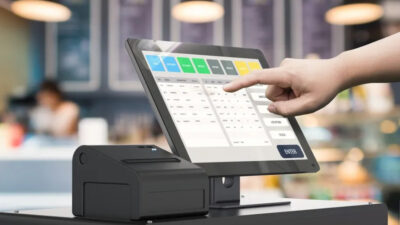In today’s fast-paced business environment, managing transactions efficiently is key to success. This is where a Point of Sale (POS) system comes in. It’s more than just a cash register; a POS system is an all-in-one tool that helps businesses streamline operations, improve customer experience, and gain valuable insights.
In this blog, we’ll explore what a POS system is, how it works, and why it’s essential for modern businesses.
What Is a Point of Sale (POS)?
A Point of Sale (POS) is the location where a customer completes a transaction for goods or services. Traditionally, it referred to the checkout counter in physical stores, but today, POS includes software and hardware that enable businesses to process payments, manage inventory, and generate sales reports.
Modern POS systems integrate seamlessly with other business operations, offering features such as real-time sales tracking, employee management, and customer relationship management (CRM).
How Does a POS System Work?
A POS system operates by combining hardware and software to process transactions. Here’s how it works step-by-step:
1. Purchase Initiation
The process begins when a customer selects an item to purchase. In a retail setting, this might involve scanning a product’s barcode. In a restaurant, it could mean selecting menu items on a touchscreen.
2. Data Processing
The POS software calculates the total price, including taxes, discounts, and promotions, and displays it on the screen. If the system is integrated with inventory management, it also updates stock levels in real-time.
3. Payment Processing
The customer makes the payment using one of the available methods:
- Cash
- Credit/Debit Cards (via a card reader)
- Mobile Payments (e.g., Apple Pay, Google Pay)
- Online Payments (for e-commerce stores)
The POS system communicates with the payment processor to approve the transaction.
4. Receipt Generation
Once the payment is completed, the POS system generates a receipt, which can be printed or sent digitally to the customer.
5. Back-End Updates
The system updates sales records, inventory, and other relevant data. Advanced POS systems also provide insights like peak sales hours, customer preferences, and employee performance.
Key Components of a POS System
- Hardware:
- Barcode Scanner: Scans product codes for faster checkout.
- Receipt Printer: Prints physical receipts for customers.
- Card Reader: Processes credit/debit card transactions.
- Cash Drawer: Securely stores cash transactions.
- Touchscreen/Tablet: Provides an interactive interface for managing transactions.
- Software:
- Sales Management: Tracks and records transactions.
- Inventory Management: Monitors stock levels and generates alerts for low inventory.
- Reporting and Analytics: Provides insights into sales trends and performance.
- Customer Management: Maintains customer profiles and purchase history.
Benefits of a POS System
- Streamlined Transactions
A POS system ensures quick and error-free checkouts, improving customer satisfaction. - Inventory Tracking
Track inventory levels in real time to prevent stockouts or overstocking. - Sales Analytics
Gain actionable insights into customer behavior, sales trends, and business performance. - Improved Customer Experience
Offer multiple payment options and personalized promotions to enhance customer loyalty. - Employee Management
Track employee performance, manage shifts, and monitor productivity.
Types of POS Systems
- Retail POS:
Designed for retail businesses, offering features like barcode scanning and inventory tracking. - Restaurant POS:
Includes table management, menu customization, and order tracking. - Mobile POS:
Portable systems that use smartphones or tablets, ideal for small businesses or on-the-go services. - Cloud-Based POS:
Stores data online, offering flexibility and easy access to updates and backups. - E-commerce POS:
Integrates with online stores to manage payments, inventory, and customer data seamlessly.
Why Your Business Needs a POS System
Investing in a POS system is not just about simplifying transactions; it’s about improving efficiency and gaining a competitive edge. Whether you run a small retail store, a busy restaurant, or an e-commerce platform, a POS system can:
- Reduce manual errors.
- Enhance decision-making through data-driven insights.
- Save time and resources by automating repetitive tasks.
Conclusion
A Point of Sale (POS) system is a critical tool for modern businesses, providing an efficient way to handle transactions, manage inventory, and improve customer satisfaction. By investing in a robust POS system, you can not only streamline operations but also unlock new opportunities for growth.
Looking for a POS solution tailored to your business? Xaltam Technologies offers cutting-edge POS systems designed to meet your specific needs.




